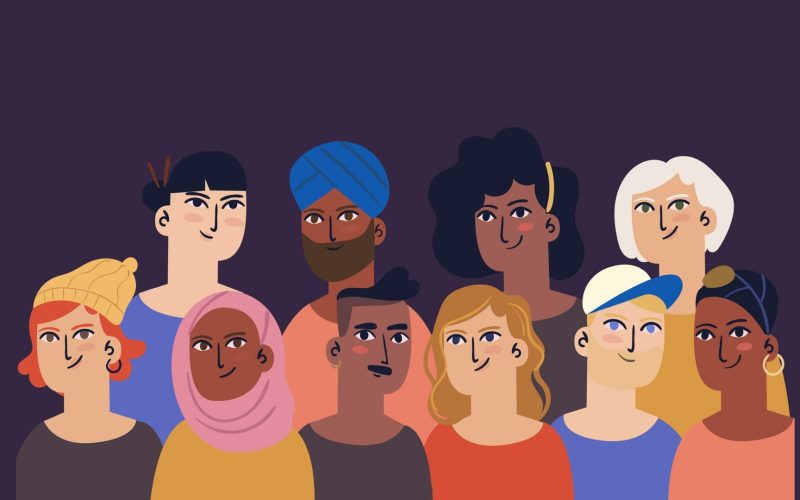Different types of cultures can only be deduced based on various forms. They are impossible to count because of variations in languages, beliefs, rituals, norms, values, and other cultural elements.
Culture is a way of life that comprises different languages, religions, and lifestyles. Yet, it can never be easy to define culture because it continuously evolves.
The word ‘culture’ etymology dates back to the Roman Empire. At that time, culture meant the cultivation of the soul or mind.
Furthermore, after the influence of German thinkers of the 18th century, culture came to get its present meaning.
The lines separating one culture from another are quite blurry. How one classifies the different cultures depends on how one measures boundaries.
Furthermore, we can classify different cultures based on several classifying cultures.
Different Types of Cultures
The various types of culture are discussed below;
1. Material Culture

Material culture is a physical culture that people create or make through society. Countries boast massive technological creativity.
China is known for producing good phones, and America has cars. This production is common enough to unite society, and therefore, it is becoming a part of material culture.
2. Non-Material Culture
This type of culture is called the intangible things produced by a culture. They are part of a culture we cannot touch, feel, taste, or hold.
Furthermore, non-material culture has a significant influence on our lives. In Nigeria, children must respect their elders, and they do this by prostrating or kneeling, greeting the elders, showing maximum respect, and so on.
These are the non-material parts of cultures that will touch and feel. However, this significantly influences the lives of youth in Nigeria.
3. Symbol Culture
Symbols are signs and arts that stand for something else. Symbols are non-verbal communication means.
The movement of some body parts can convey different meanings in different cultures. In Nigeria, for instance, nodding the head means saying No! However, moving the head back and forth in Bulgaria may mean yes!
In some parts of Africa, the Middle East, and Asia, you can’t eat with your left hand without the people not feeling offended. However, this is a norm in many western countries.
4. Regional Culture
Regional culture is a type of culture unique to a particular region. For example, Americans have a rich culture that enjoys baseball.
Furthermore, some parts of Nigeria speak pidgin, a language some people call Nigeria English.
Moreover, certain foods are for some particular regions; for example, deep-dish pizza is a norm for the people of Chicago.
Furthermore, different words can be used for the same thing in different countries. For instance, depending on the region, carbonated drinks are called soda, pop, and even soft drinks.
Language generally influences how we perceive other people’s cultures.
5. Corporate Culture
In some places of work, they can allow their workers to dress very casually, and in some areas, you have to dress formally.
Furthermore, you can’t dress in a lab coat to an engineering site; the culture of wearing a lab coat is for medical personnel and scientists.
As a footballer, you can’t wear jeans and a pair of farm boots to the field to play football. The culture of one workplace is entirely different from another.
The attitude to which people act and relate is an example of the corporate culture.
6. Popular Culture
Slang is a perfect example of popular culture. The activities of the citizens also determine popular culture. What songs are people listening to? What are people reading?
Furthermore, what is the favorite movie people are wearing? What is the slang people are saying? People’s dress at a particular time is an excellent example of popular culture.
Social media influencers, musicians, and movie producers can impact which activities, slang, styles, and modes of dressing are most popular.
7. Cultures by Ethnicity
Discussing different cultures without discussing cultures by ethnicity is never complete.
There are different types of cultures by nationality or ethnicity;
- Western culture: Western culture is a heritage of social norms, traditional beliefs, beliefs, and political systems of the Western world. Western culture is influenced by Roman law, Christian culture, and Greek philosophy. Furthermore, western cultures include the Americas and Oceania region. Western culture has developed many traditions, the most significant of which is the tradition of the importance of law. Furthermore, Christianity is philosophical from the bible.
- Anglo-America Culture: Anglo-America often refers to a region in the Americas that speaks English as its main language. Furthermore, the British Empire has a significant role and cultural impact in the region.
- Latin American Culture: The primary religion in Latin America is Christianity, having a diverse population with many ethnic groups. Furthermore, Latin America is America, whose culture, religion, and heritage can be traced to the Latin culture of Roman America.
- Islamic Culture: Islamic culture refers to practices developed around Islam. Muslim culture is widely influenced in Egypt, Turkey, Morocco, Persian, Somali, Indonesian, Indian, and others. The main languages of Islamic culture are Arabic, Persian, Indic, and Turkish.
- Arab Culture: This is the culture of the Arabs; from the Atlantic Ocean to the Horn of Africa and the Indian Ocean, these Arabs have a very rich dressing culture. The men dress in traditional flowing robes and a headdress. Furthermore, the women wear full-length body cover Abayas and hijab.
- Indosphere: This is the culture of South Asia and Southeast Asia.
- Sinosphere: Culture of the East Asia.
- African Culture: African cultures are widely diverse. Social values, religion, and morals contributed to African culture, differentiating it from the cultures of different continents. Folktales play important roles in many African countries. Furthermore, Africa still boasts very good music and musical instruments.
Understanding the various meanings and types of culture is essential. Thinking about the different cultures gives you a better understanding of the world and the ideas, norms, and values you experience in your day-to-day activities.
Furthermore, it’s worth noting that cultures move from one generation to another. One of the key features of culture is that you can learn it, and learning culture is the quickest way of preserving a culture from one generation to the other.
In conclusion, culture can take some time to learn, and it can even be difficult for people to adjust to a new culture.
When exposed to a new environment, people experience culture shock; however, individuals with self-control will adapt quickly to a new culture and a new way of life.
Culture is generally the collective Programming of the mind that distinguishes one group of people from another.








